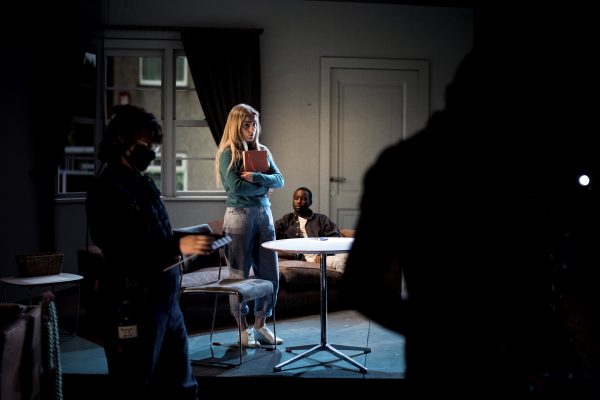On Making Theatre without Theatres

As we reach the climax of the Future and Form project and restrictions lift to enable live theatre to return, I’m struck by the miraculous emergence of James McDermott’s Senseless. This has been a journey without maps. As UEA academic lead, I’ve watched James negotiate a year of set-backs with awe, all of it going into the mix of his dazzling script.
The year began hopefully – we sat in the café of the Norwich Theatre in March 2020 spitballing what the project might become; a week later the venue was mothballed. During the next nine months as we lurched between openings and lockdowns, migrating to zoom meetings, the key resource was less technology than sheer optimism. James cannily internalised these anxieties into the form of the play, a fractured account of love and technology in the time of virus.
The pandemic stress-test has underlined the necessity of Future and Form; without technology we’d now have a play on the page not the stage. Only the ingenuity of the team at Guildhall Live Events saved the show. As we hit the darkness of the new year, and the race between variants and vaccine roll-outs, it became clear that GLE would have to find a hybrid state between theatre and screen to serve James’s text.
Director Dan Shorten and his brilliant team of student designers fashioned an amalgam of live theatre and XR/AR wizardry to realise Senseless with talented Guildhall actors. I commend their courage and resourcefulness, rehearsing under a regime of tests, masks and social distancing whilst other theatres remained dark. I’d love to be sitting in a venue with you all to enjoy the debut of Senseless next week, but I’m equally thrilled to share it with a potentially infinite audience online, confident it offers an exciting roadmap into theatre’s future.
-Steve Waters